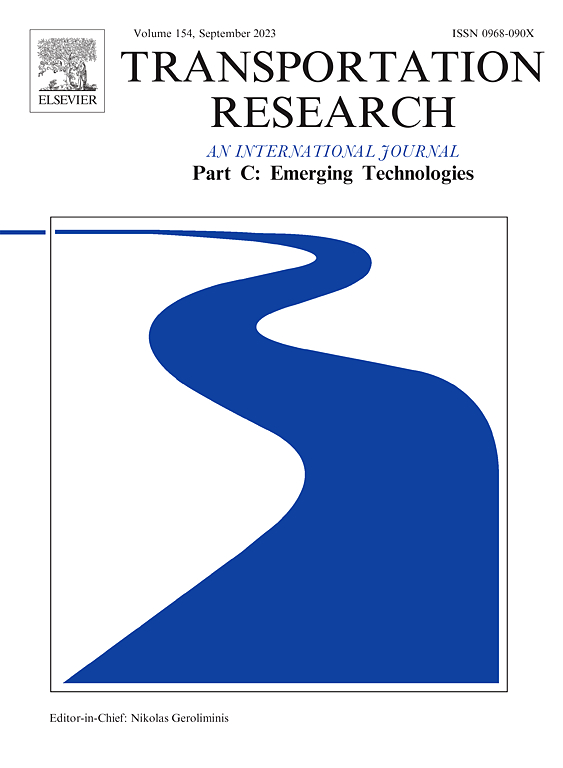Incorporating domain knowledge in deep neural networks for discrete choice models
IF 7.6
1区 工程技术
Q1 TRANSPORTATION SCIENCE & TECHNOLOGY
Transportation Research Part C-Emerging Technologies
Pub Date : 2025-02-01
DOI:10.1016/j.trc.2025.105014
引用次数: 0
Abstract
This paper explores the integration of domain knowledge into deep neural network (DNN) models to support the interpretability of travel demand predictions in the context of discrete choice models (DCMs). Traditional DCMs, formed as random utility models (RUM), are widely employed in travel demand analysis as a powerful theoretical econometric framework. But, they are often limited by subjective and simplified utility function specifications, which may not capture complex behaviors. This led to a growing interest in data-driven approaches. Due to their flexible architecture, DNNs offer a promising alternative for learning unobserved non-linear relationships in DCMs. But they are often criticized for their “black box” nature and potential deviations from established economic theory.
This paper proposes a framework that incorporates domain knowledge constraints into DNNs, guiding the models toward behaviorally realistic outcomes while retaining predictive flexibility. The framework’s effectiveness is demonstrated through a synthetic dataset and an empirical study using the Swissmetro dataset. The synthetic study confirms that domain knowledge constraints enhance consistency and economic plausibility, while the Swissmetro application shows that constrained models avoid implausible outcomes, such as negative values of time, and provide stable market share predictions. The proposed approach is independent of the model structure, making it applicable on different model architectures. The methodology was applied on both standard DNN and an alternative-specific utility DNN (ASU-DNN). Although constrained models exhibit a slight reduction in predictive fit, they generalize better to unseen data and produce interpretable results. This study offers a pathway for combining the flexibility of machine learning with domain expertise for DCMs, across diverse model architectures and datasets.
求助全文
约1分钟内获得全文
求助全文
来源期刊
CiteScore
15.80
自引率
12.00%
发文量
332
审稿时长
64 days
期刊介绍:
Transportation Research: Part C (TR_C) is dedicated to showcasing high-quality, scholarly research that delves into the development, applications, and implications of transportation systems and emerging technologies. Our focus lies not solely on individual technologies, but rather on their broader implications for the planning, design, operation, control, maintenance, and rehabilitation of transportation systems, services, and components. In essence, the intellectual core of the journal revolves around the transportation aspect rather than the technology itself. We actively encourage the integration of quantitative methods from diverse fields such as operations research, control systems, complex networks, computer science, and artificial intelligence. Join us in exploring the intersection of transportation systems and emerging technologies to drive innovation and progress in the field.

 求助内容:
求助内容: 应助结果提醒方式:
应助结果提醒方式:


